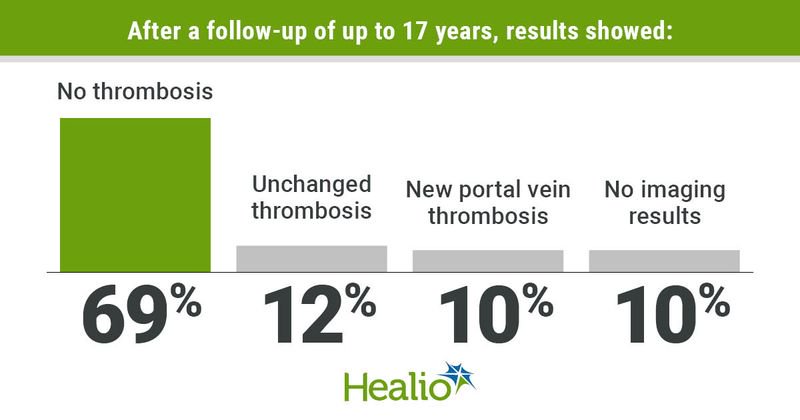Portal vein thrombosis rates higher after TACE, but ‘negligible’ effect on clinical course
Key takeaways:
- Postprocedural imaging showed 10% of patients had new portal vein thrombosis after transarterial chemoembolization.
- No patient received anticoagulation or systemic therapy, and liver function tests were normal.
Incidence of new portal vein thrombosis was higher after transarterial chemoembolization for hepatocellular carcinoma compared with microwave or radiofrequency ablation, although researchers reported no clinically significant sequalae.
“Transarterial chemoembolization (TACE) is recommended for patients with asymptomatic, large or multifocal HCC without extrahepatic metastases,” Marisa E. Schwab, MD, of the department of surgery at the University of California, San Francisco, and colleagues wrote in JAMA Surgery. “Known risks of TACE include biliary and hepatic artery complications. Little is known about venous thrombosis (VT) after locoregional therapies, which has been described after microwave and radiofrequency ablation (RFA).”

In a retrospective, cross-sectional study, researchers determined the incidence of portal vein thrombosis (PVT) among 124 male veterans (mean age, 61 years; 65% with cirrhosis; 41% Child-Pugh B; 2% Child-Pugh C) with HCC who underwent TACE.
Researchers noted 60% of patients underwent one TACE procedure, 29% underwent two procedures and 11% underwent three to four procedures. Imaging was performed 6 months after TACE, with presence of a new VT after embolization serving as the primary outcome of interest.
After a follow-up of up to 17 years, results showed 69% of patients had no thrombosis, 12% had unchanged thrombosis and 10% had a new PVT. Ten percent of patients did not have imaging results that could be assessed for thrombosis.
Notably, no patient received anticoagulation or systemic therapy, and liver function tests were normal.
“An RFA case series described a 1.4% rate of hepatic VT and a 1.7% rate of PVT,” Schwab and colleagues wrote. “The incidence rate in this study was higher, suggesting an association of chemotherapy and embolic particles in TACE with increased thrombosis compared with microwave ablation or RFA.”
Researchers noted, however, that although findings indicate PVT can be seen after TACE, the effects on the patients’ clinical course appear to be “negligible,” which “raises the question of whether portal vein thrombus should be considered as a true contraindication.”
They concluded: “This descriptive study is important for clinicians caring for patients with HCC. ... Understanding the possible sequelae, including PVT, and how they may affect other future therapies, especially surgery, is crucial.”
